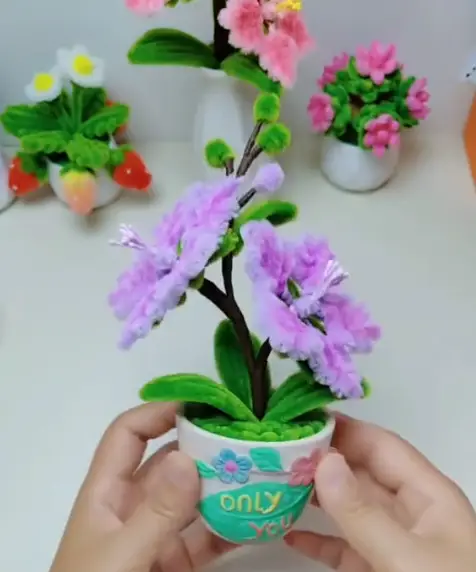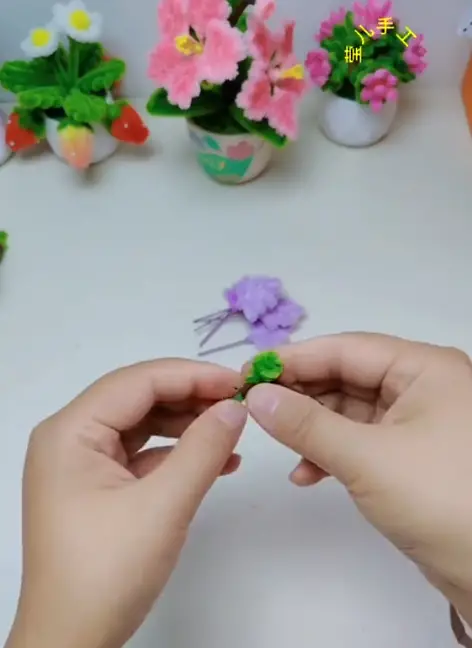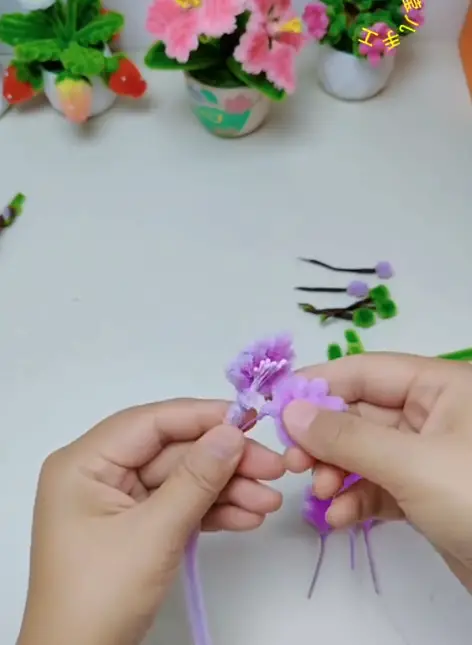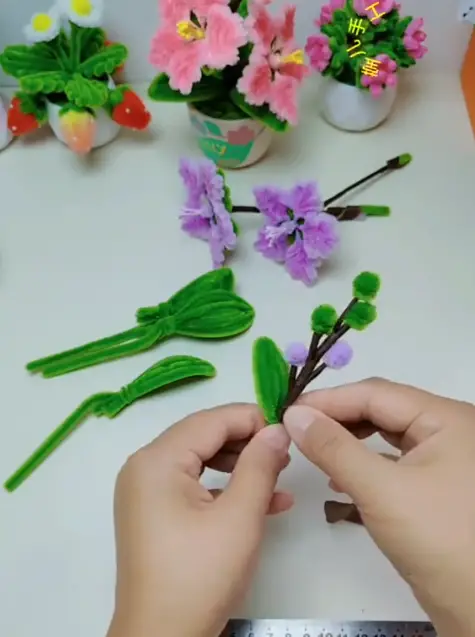✨ Unlock Exclusive Deals for Your DIY Projects! ✨
🛠️ Get ready to stock up on all the materials you need for your next creative masterpiece! Download the Temu App now using this link: https://app.temu.com/m/mw86ty45cfk and claim your limited-time $200 coupon bundle.
🎁 How it works:
1️⃣ Click the link and download the app.
2️⃣ Access unbeatable prices on premium DIY supplies.
3️⃣ Redeem your exclusive coupon (only available through this link).
🌟 Hurry – this special offer won’t last forever! Don’t miss the chance to save big and make your DIY dreams a reality. Click here to start your journey: https://temu.to/k/u7t97s4h9c3 🛍️
When it comes to embracing creativity and finding joy in simple crafts, pipe cleaner flowers are the unsung heroes of the DIY world. They’re playful, inexpensive, and can turn even the least artistic among us into crafting pros. But this isn’t just a nostalgic throwback to childhood crafts; pipe cleaner flowers have quietly taken on a life of their own, sneaking into modern trends, celebrity art walls, and even luxury fashion campaigns.
Consider the way Gigi Hadid posted her “quarantine art” on Instagram—crafty creations that included everything from whimsical bracelets to delicate flower-inspired projects. Or how Taylor Swift has adorned her home with DIY crafts she made during downtime. The cultural obsession with handmade creativity isn’t just about aesthetics; it’s about reclaiming a sense of personal touch in an increasingly digital world. And pipe cleaner flowers? They’re the perfect metaphor for this movement—simple, accessible, and endlessly customizable.

The beauty of pipe cleaner flowers lies in their simplicity. Armed with a packet of colorful pipe cleaners, a pair of scissors, and maybe a touch of glue, anyone can create a bouquet of playful blooms. For those seeking eco-friendly alternatives to synthetic décor, these DIY creations can be just the thing. They’re biodegradable, require no additional materials like plastic, and can be reused or reimagined endlessly.
In the world of haute couture, something as simple as a pipe cleaner flower might seem out of place—until you remember the resurgence of handmade aesthetics in high fashion. Take Dior’s Spring/Summer 2023 campaign, which incorporated artisanal details like hand-sewn embroidery and naturalistic floral motifs. Imagine how pipe cleaner flowers could easily complement the aesthetic, becoming statement pieces for photo shoots or a playful touch at high-society garden parties.

But let’s bring it back to practicality. Pipe cleaner flowers are a family-friendly activity that requires minimal setup. With just a few steps, kids and adults alike can craft roses, daisies, and even elaborate floral arrangements. The process becomes not just a creative outlet but an exercise in mindfulness. There’s something meditative about bending, twisting, and shaping these fuzzy wires into lifelike blooms.
Here’s a quick step-by-step guide to making your first flower:
- Choose your colors: Pick pipe cleaners in the shades you want for your petals and stem.
- Form the petals: Take one pipe cleaner and loop it into an oval to create the first petal. Twist the ends together to secure it and repeat until you have 4-5 petals.
- Shape the flower: Arrange the petals in a circular pattern, twisting them together in the center to form a flower shape.
- Add the stem: Use a green pipe cleaner to create the stem. Wrap it tightly around the center of the flower for stability.
- Personalize it: For added flair, incorporate beads, glitter, or even a subtle spray of perfume to make your creation unique.
You don’t have to stop at flowers. Pipe cleaner bouquets, garlands, or even wearable accessories like brooches or hairbands can be created with the same materials. At a time when handmade gifts are valued more than ever, a bouquet of DIY pipe cleaner flowers can carry as much sentiment as a fresh-cut arrangement, minus the inevitable wilting.
The influence of pipe cleaner flowers also extends into the realm of mental health. Therapists have long touted the benefits of crafting as a way to combat anxiety and depression. Whether it’s through the repetitive motions of bending and twisting or the sense of accomplishment that comes with completing a project, crafts like these encourage mindfulness. It’s no surprise that many celebrities, from Emma Watson to Kristen Bell, swear by DIY projects to unwind.
In classrooms, pipe cleaner flowers are increasingly being used as teaching tools. They’re perfect for introducing children to concepts of geometry, symmetry, and even environmental sustainability. What better way to teach about nature than by creating a tactile representation of it? Beyond the classroom, DIY flower kits have become popular items on platforms like Etsy and Pinterest, where artisans offer pre-curated packs for enthusiasts looking to get started.

Social media has also played a significant role in the popularity of DIY pipe cleaner crafts. TikTok, in particular, has been a haven for creators showing off their elaborate flower designs in short, engaging clips. With hashtags like #CraftingTherapy and #DIYFlowers gaining millions of views, it’s clear that the humble pipe cleaner has cemented its place in contemporary culture.
Moreover, there’s a growing trend of using pipe cleaner flowers in sustainable wedding décor. Couples looking to lower their carbon footprint are opting for handcrafted decorations, and pipe cleaner flowers are a natural fit. They’re lightweight, colorful, and can be customized to match any theme. From whimsical centerpieces to bouquet alternatives, these quirky creations are proving to be both practical and eye-catching.
What’s even more fascinating is how this small craft project can ripple out into larger social movements. The handmade revolution isn’t just about rejecting mass production; it’s about reclaiming individuality in a world saturated with sameness. Pipe cleaner flowers, with their imperfect yet charming aesthetic, embody this ethos perfectly.

Even big-name designers have started incorporating DIY-inspired elements into their work. Brands like Gucci and Loewe have embraced a more handcrafted feel in recent years, celebrating the imperfections and uniqueness that come with human touch. It’s not hard to imagine a runway show that features pipe cleaner flowers as playful, oversized accessories—adding a pop of whimsy to an otherwise structured collection.
In an era where we’re constantly bombarded by sleek, minimalist designs and mass-produced goods, the tactile joy of creating something as simple as a pipe cleaner flower feels almost revolutionary. It’s a reminder that beauty doesn’t have to come with a hefty price tag or a fancy label. Sometimes, all it takes is a bit of wire, a splash of color, and a spark of imagination.
So, the next time you find yourself scrolling through Instagram or flipping through a glossy magazine, don’t be surprised if you spot a pipe cleaner flower subtly adorning the backdrop. What started as a humble childhood craft has blossomed into a symbol of creativity, sustainability, and joy. And really, what could be more on-trend than that?





